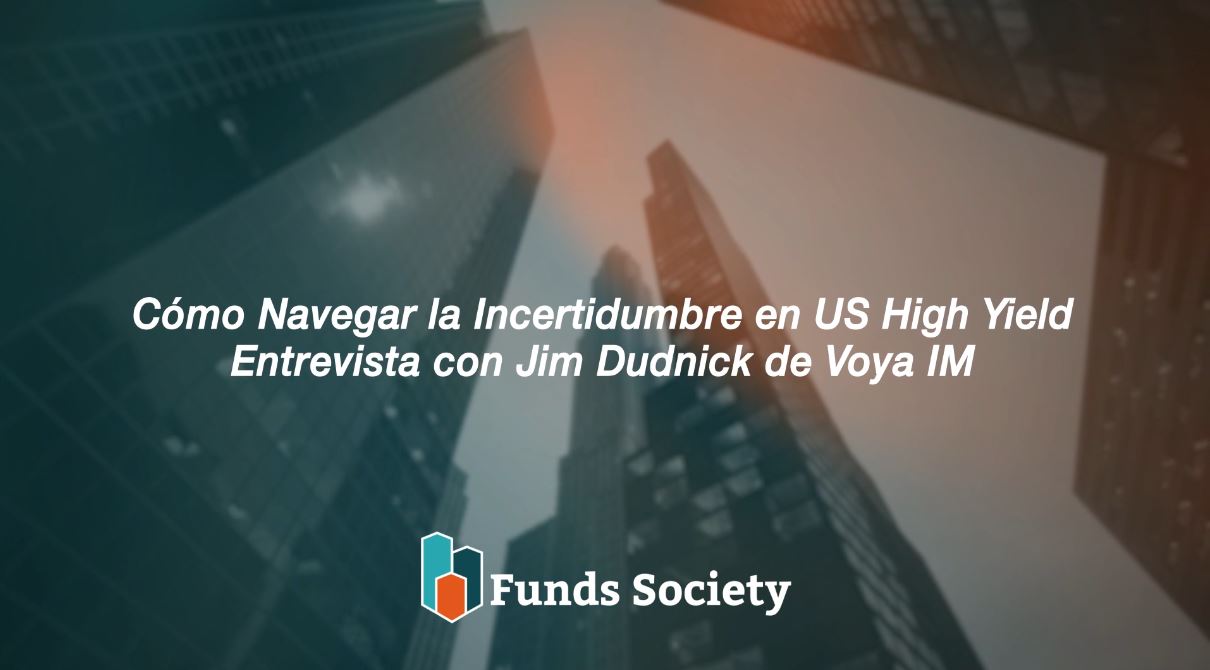Ethan Turner, Senior Vice President and Portfolio Manager de Voya Investment Management, explica en esta videoentrevista el papel que pueden desempeñar los bonos convertibles en una cartera de inversión, su funcionamiento y por qué resultan especialmente atractivos en el entorno de mercado actual.
“En su forma más simple, un bono convertible es un valor híbrido que ofrece a los inversores las ventajas tanto de las acciones como de los bonos”, señala el experto del equipo de Income & Growth de Voya, que es uno de los mayores gestores de convertibles del mundo*.
Es decir que los convertibles funcionan como un bono tradicional, ofreciendo un cupón y el reembolso del principal al vencimiento, pero incluyen además una opción implícita que permite convertirlo en acciones, lo que añade un potencial de revalorización.
Esta característica dual los convierte en un instrumento capaz de ofrecer tanto la protección a la baja propia de la renta fija como la participación en las subidas del mercado de renta variable. Teniendo en cuenta, eso sí, que “dado que tienen estas dos características, un valor convertible tiene los riesgos tanto de la renta variable y su volatilidad como de la renta fija relacionados con los diferenciales y los tipos”, apunta Turner.
A lo largo de la entrevista, el gestor explica que este tipo de activo tiene un comportamiento único, que se traduce en una rentabilidad asimétrica. “Cuando una acción sube, el valor convertible tiene aceleración al alza. Y cuando la acción baja, tienes desaceleración a la baja”, indicó, subrayando que esto permite a los inversores capturar entre el 60% y el 70% de las subidas del mercado con menos del 50% de las caídas.
En este sentido, los bonos convertibles resultan especialmente interesantes en entornos volátiles e inciertos como el actual, marcado por tensiones geopolíticas, dudas sobre la inflación y movimientos de política fiscal. “Como ha demostrado la historia en los últimos 35 años, los bonos convertibles han ofrecido rentabilidades similares a las de la renta variable, pero con menor volatilidad”, concluyó Turner, resaltando el valor de estos instrumentos en la gestión del riesgo y la búsqueda de rendimientos sostenibles a largo plazo.
*As of May 22, 2025 Source: eVestment Alliance, LLC and its affiliated entities(collectively “Nasdaq eVestment”) collect information directly from investment management firms and other sources believed to be reliable, however, Nasdaq eVestment does not guarantee or warrant the accuracy, timeliness, or completeness of the information provided and is not responsible for any errors or omissions. Performance results may be provided with additional disclosures available on Nasdaq eVestment’s systems and other important considerations such as fees that may be applicable. Not for general distribution and limited distribution may only be made pursuant to client’s agreement terms. * All categories not necessarily included, Totals may not equal 100%. Copyright © Nasdaq. All Rights Reserved.
Important information: Sub-funds of the Allianz Global Investors Fund SICAV are not for sale to or for the benefit of any U.S. person. Voya Investments Distributor, LLC (VID) is the exclusive distributor of Allianz Global Investors Funds sold through intermediaries based in the U.S. and Canada to clients residing outside of the U.S. or Canada. Allianz Global Investors GmbH is fund manager. Voya Investment Management and VID are not affiliates of AllianzGI.
Past performance does not guarantee future results. This review has been prepared by Voya Investment Management for informational purposes. Nothing contained herein should be construed as (i) an offer to sell or solicitation of an offer to buy any security or (ii) a recommendation as to the advisability of investing in, purchasing or selling any security by Voya IM or any other party to citizens or residents of, any country, state or jurisdiction where it would be unlawful to offer, to solicit an offer for, or to sell such financial instruments to such citizens or residents in such country, state or jurisdiction. Any opinions expressed herein reflect our judgment and are subject to change. Certain of the statements contained herein are statements of future expectations and other forward-looking statements that are based on management’s current views and assumptions and involve known and unknown risks and uncertainties that could cause actual results, performance, or events to differ materially from those expressed or implied in such statements. Actual results, performance or events may differ materially from those in such statements due to, without limitation, (1) general economic conditions, (2) performance of financial markets, (3) changes in laws and regulations and (4) changes in the policies of governments and/or regulatory authorities.
Indices are unmanaged and an individual cannot invest directly in an index. Index returns do not include fees or expenses.
©2025 Voya Investments Distributor, LLC • 200 Park Ave, New York, NY 10169 • All rights reserved.
Market Volatility: The value of the securities in the portfolio may go up or down in response to the prospects of individual companies and/or general economic conditions. Price changes may be short- or long-term. Local, regional or global events such as war, acts of terrorism, the spread of infectious illness or other public health issue, recessions, or other events could have a significant impact on the portfolio and its investments, including hampering the ability of the portfolio’s manager(s) to invest the portfolio’s assets as intended. Issuer Risk: The portfolio will be affected by factors specific to the issuers of securities and other instruments in which the portfolio invests, including actual or perceived changes in the financial condition or business prospects of such issuers. Convertible Securities: A convertible security may be called for redemption at a time and price unfavorable to the portfolio. Interest Rate: The values of debt instruments may rise or fall in response to changes in interest rates, and this risk may be enhanced for securities with longer maturities. Counterparties: There is risk that a party upon whom the portfolio relies to complete a transaction will default. Credit Risk: If the issuer of a debt instrument fails to pay interest or principal in a timely manner, or negative perceptions exist in the market of the issuer’s ability to make such payments, the price of the security may decline. Prepayments/Calls: If issuers prepay or call fixed rate obligations when interest rates fall, it may force the portfolio to reinvest at lower interest rates. Equity Securities: The market price of equity securities may be adversely affected by financial market, industry, or issuer-specific events. Focus on a particular style or on small or medium-sized companies may enhance that risk. High Yield Fixed Income Securities: There is a greater risk of issuer default, less liquidity, and increased price volatility related to high yield securities than investment grade securities.
ICE BofA US Convertibles Index represents a broad set of Convertible and Convertible preferred issues. The ICE BofA US Convertibles Index captures the performance of convertible securities issued by corporations domiciled in the United States or Canada. Unless otherwise noted, bond index returns include all payments to bondholders, but do not reflect fees, brokerage commissions or other expenses of investing. Investors may not make direct investments into any index. All returns presented are calculated using U.S. dollars.
The Standard & Poor’s 500 Index (S&P 500) is an unmanaged index generally representative of the US stock market, without regard to company size.



